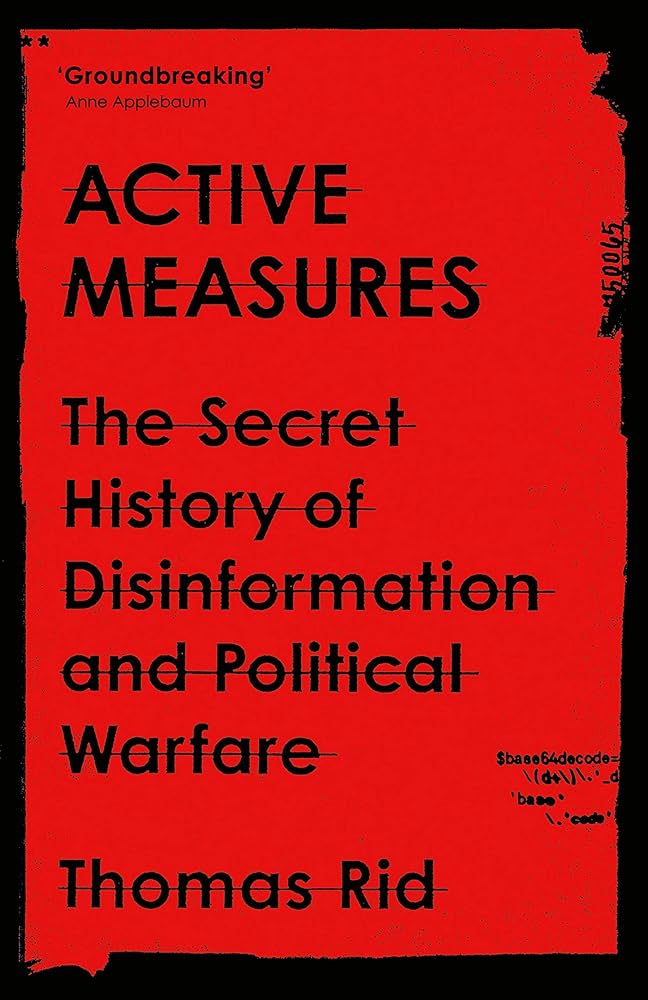Disinformation: A potent weapon in the information age
In the contemporary landscape of geopolitical strategy, disinformation has emerged as a formidable weapon, wielding the power to manipulate public opinion, sow discord among nations, and undermine democratic processes. Thomas Rid’s insightful analysis in “Active Measures: The Secret History of Disinformation and Political Warfare” delves deep into the historical evolution and contemporary manifestations of this insidious tactic. Rid’s work provides a crucial framework for understanding the complex nature of disinformation and its profound impact on global affairs.
Historical roots and evolution of disinformation campaigns
Disinformation campaigns are not a novel phenomenon; their roots can be traced back centuries. From the propaganda efforts of ancient civilizations to the sophisticated psychological operations of the Cold War, states and non-state actors have consistently sought to exploit information for strategic gain. Rid meticulously documents the evolution of disinformation tactics, from forged documents and fabricated news stories to the sophisticated use of social media and artificial intelligence in the digital age. The Soviet Union’s “active measures” program, a systematic effort to manipulate perceptions and influence political outcomes, serves as a prominent case study in Rid’s analysis. This program employed a range of techniques, including forgeries, front groups, and media manipulation, to undermine Western democracies and advance Soviet interests.
The changing landscape of disinformation warfare in the digital era
The advent of the internet and social media has revolutionized the dissemination and consumption of information, creating new opportunities and challenges for disinformation campaigns. The rapid spread of information online, coupled with the anonymity afforded by digital platforms, has made it easier and cheaper to propagate false narratives and manipulate public opinion. This has led to an increase in the volume and velocity of disinformation campaigns, with profound consequences for political discourse and democratic processes. Furthermore, the rise of sophisticated technologies like artificial intelligence and machine learning has enabled the creation of highly realistic and persuasive fake videos and audio recordings, known as “deepfakes,” further blurring the lines between reality and fabrication.
Case studies: Examining the impact of disinformation across different contexts
Rid’s work examines a wide range of case studies to illustrate the diverse ways in which disinformation has been employed to achieve strategic objectives. These examples span various geographical regions and political contexts, from the Russian interference in the 2016 US presidential election to the spread of disinformation about the COVID-19 pandemic. Rid analyzes the specific tactics used in each case, the actors involved, and the impact on the targeted populations. By examining these real-world examples, Rid provides a nuanced understanding of the complex dynamics of disinformation campaigns and their potential consequences.
Countering disinformation: Strategies and challenges
The rise of disinformation poses a significant threat to democratic societies and international stability. Combating this threat requires a multi-pronged approach involving governments, technology companies, media organizations, and individuals. Rid explores the challenges associated with countering disinformation, including the difficulty of attribution, the speed at which false information spreads online, and the legal and ethical considerations surrounding censorship and freedom of speech. He argues for a combination of strategies, including media literacy education, fact-checking initiatives, platform regulation, and government intervention, to address the disinformation challenge effectively.
The future of disinformation and its implications for global security
As technology continues to evolve and information becomes increasingly weaponized, the threat of disinformation is likely to intensify. Rid emphasizes the need for continuous vigilance and adaptation in the face of this evolving threat. He argues that a deeper understanding of the history, tactics, and impact of disinformation campaigns is crucial for developing effective countermeasures and safeguarding democratic values. By exposing the manipulative nature of disinformation and its potential to destabilize societies, Rid’s work serves as a call to action for individuals, governments, and organizations to actively defend against this insidious form of political warfare. The ongoing battle against disinformation will require a concerted global effort to protect the integrity of information and uphold the principles of truth and transparency in the digital age.


